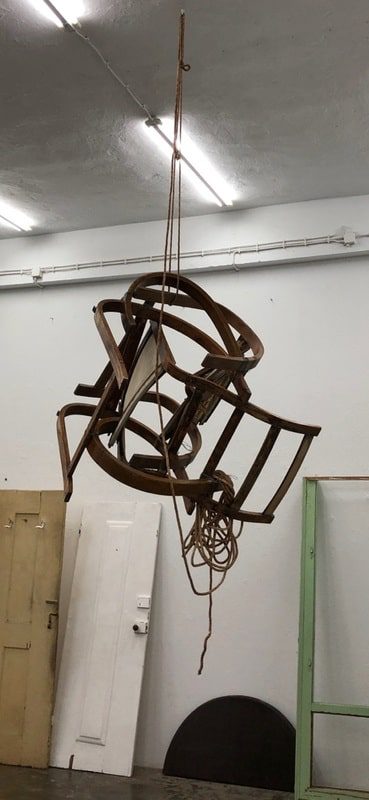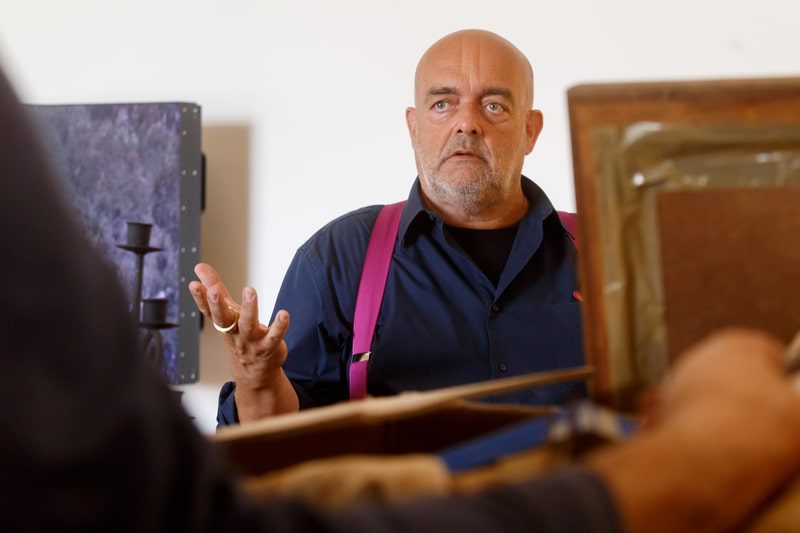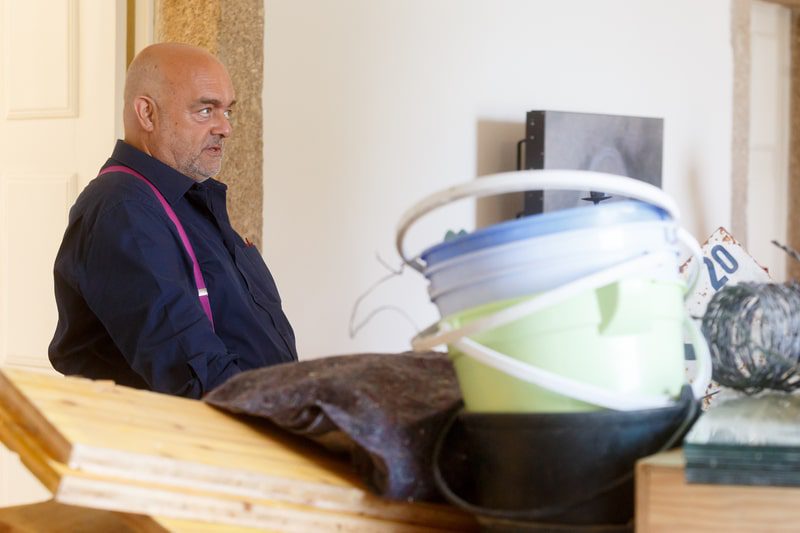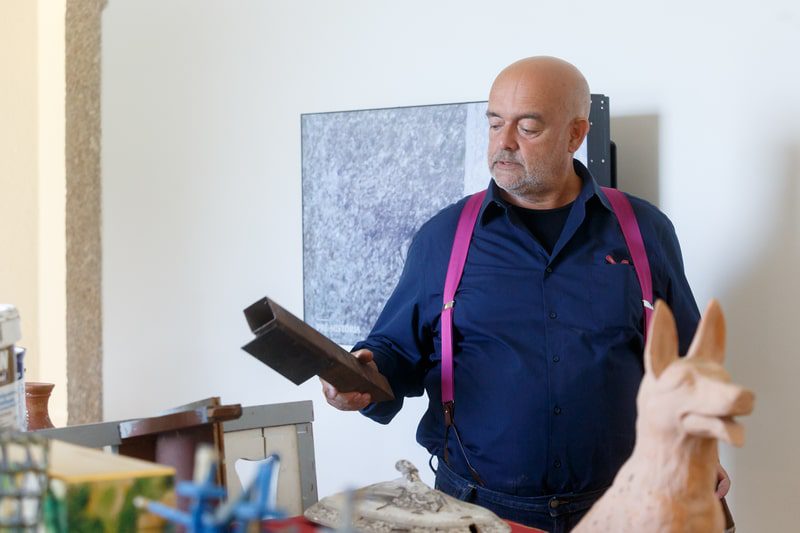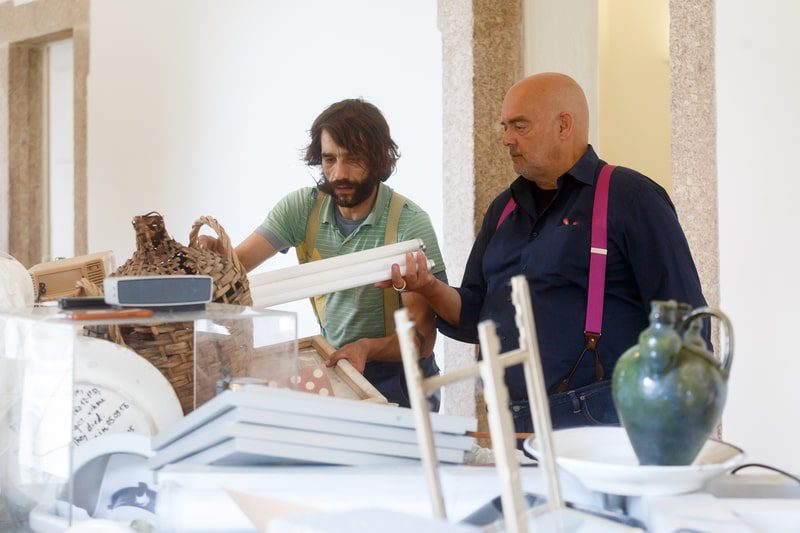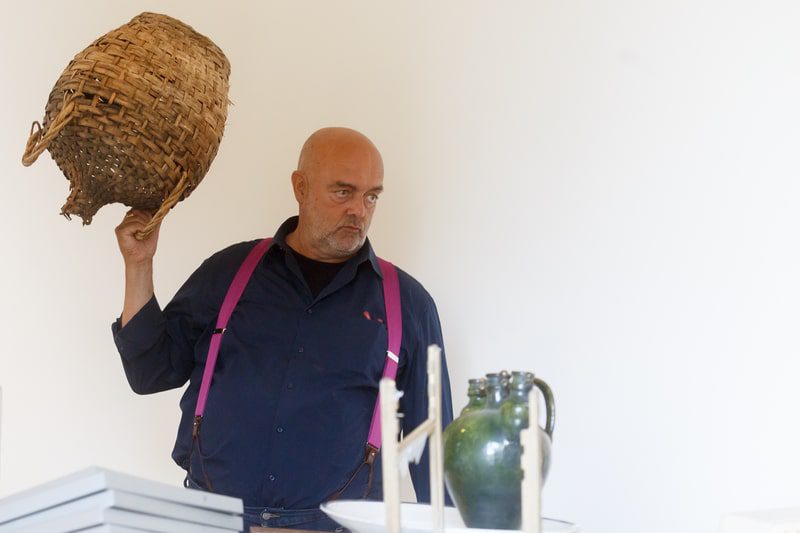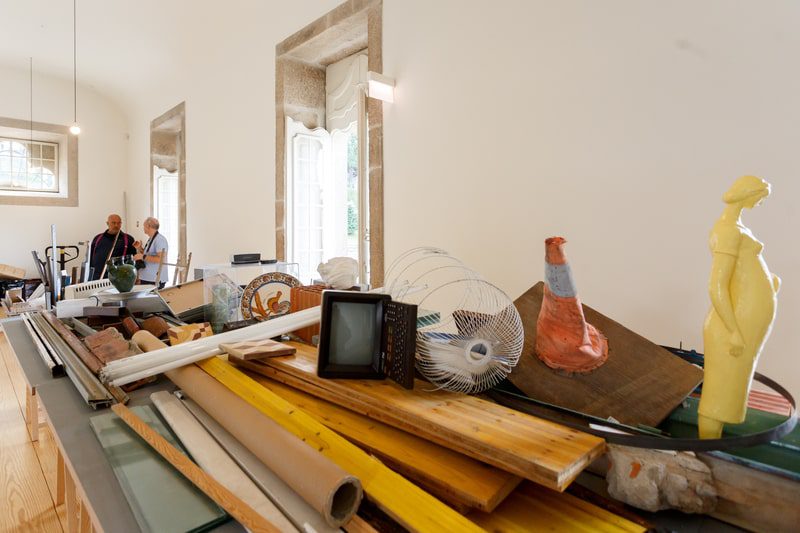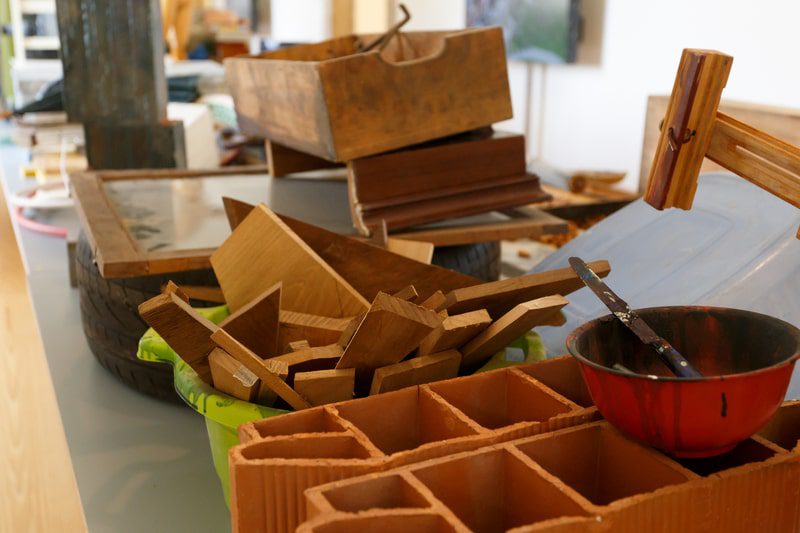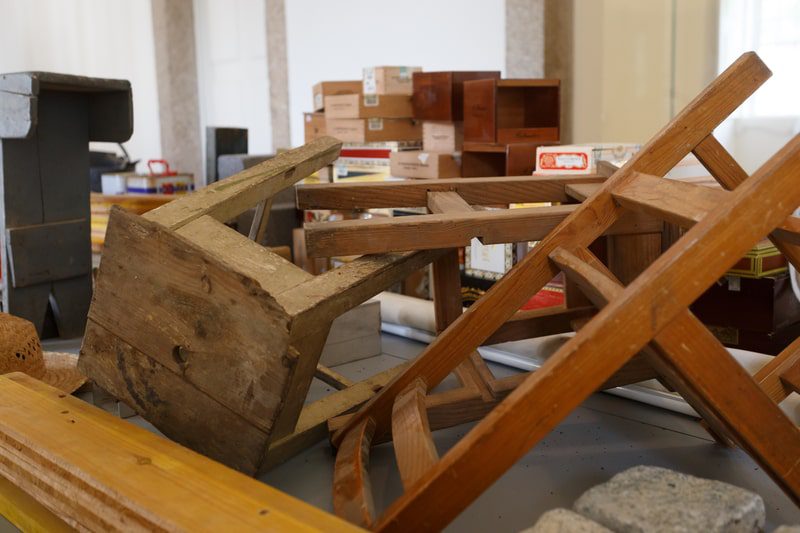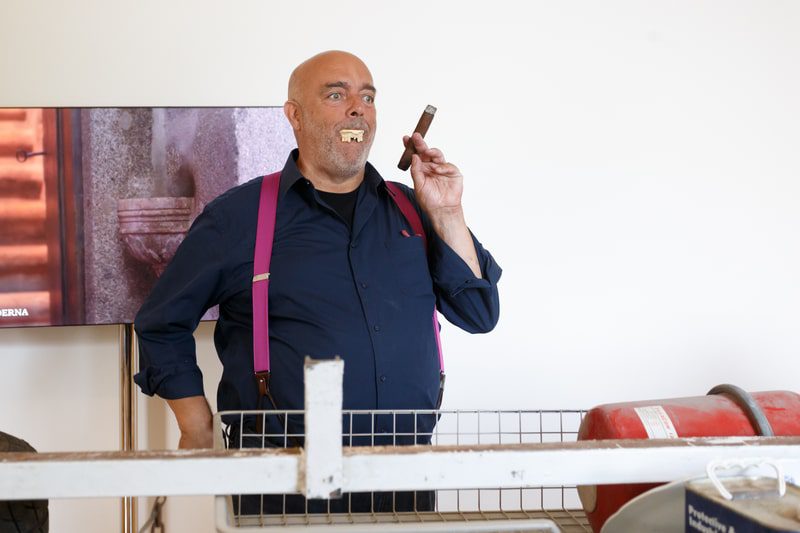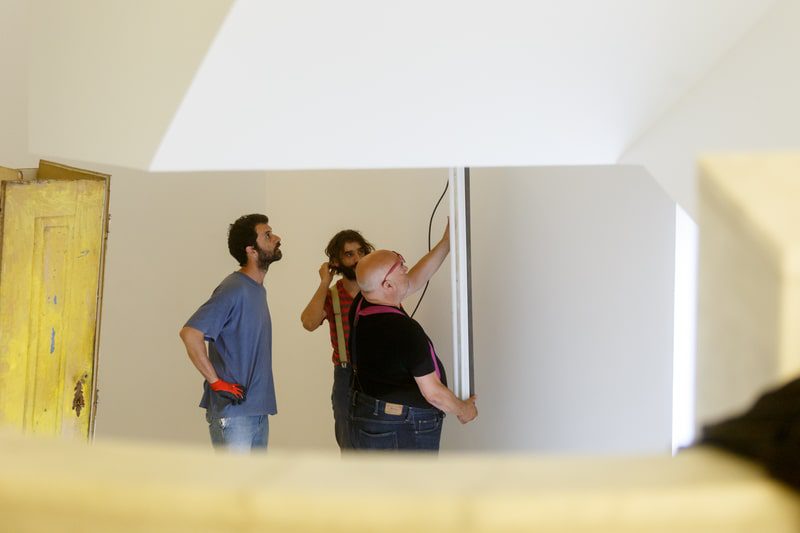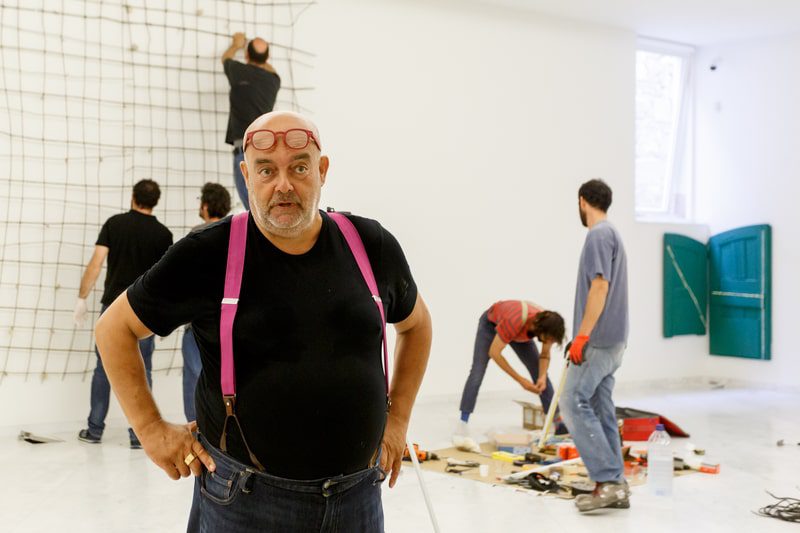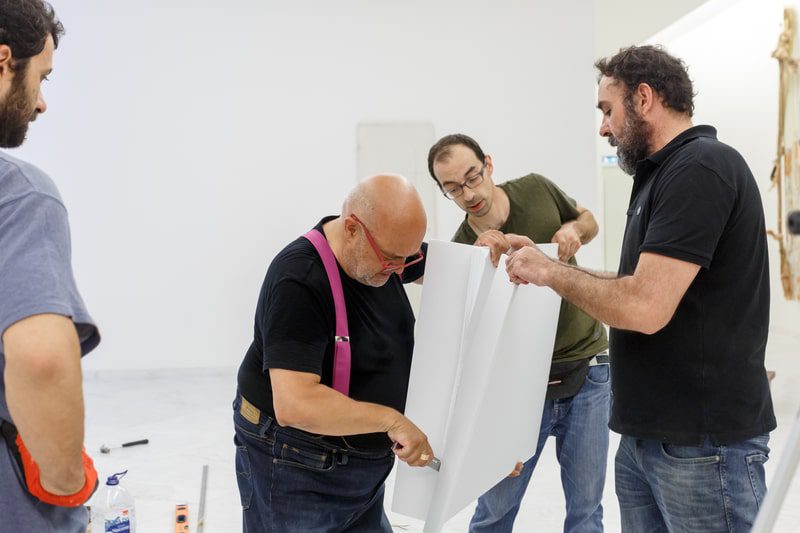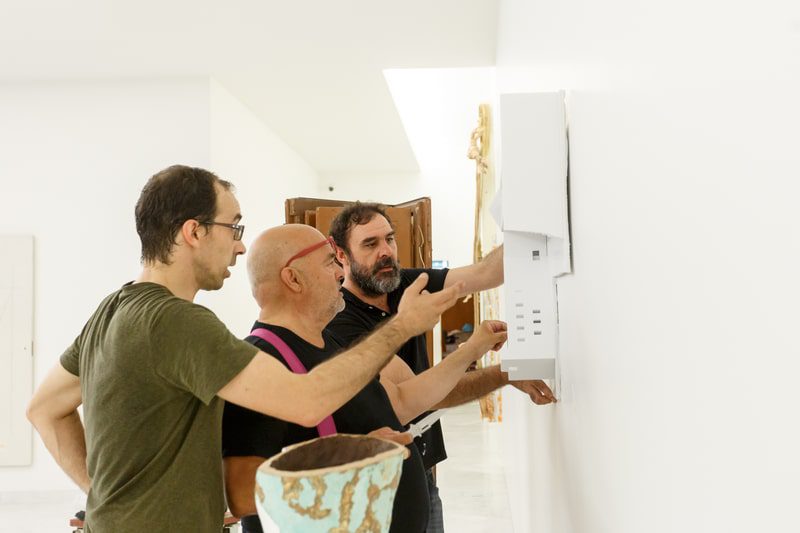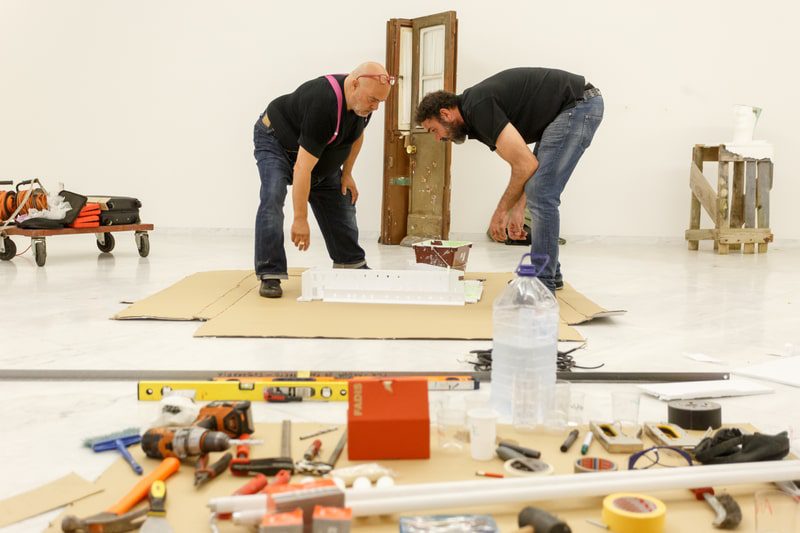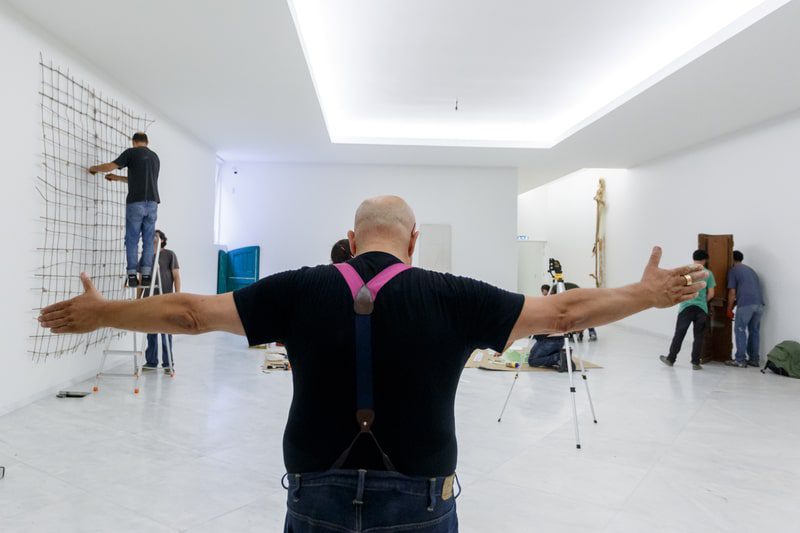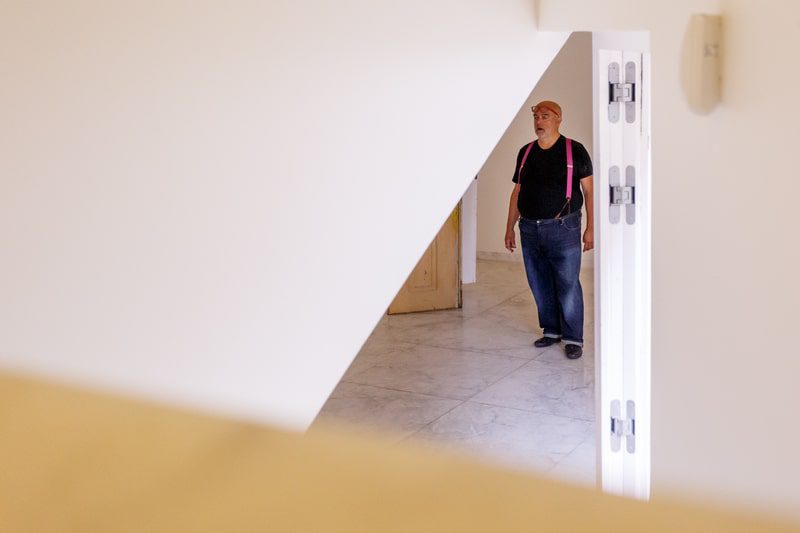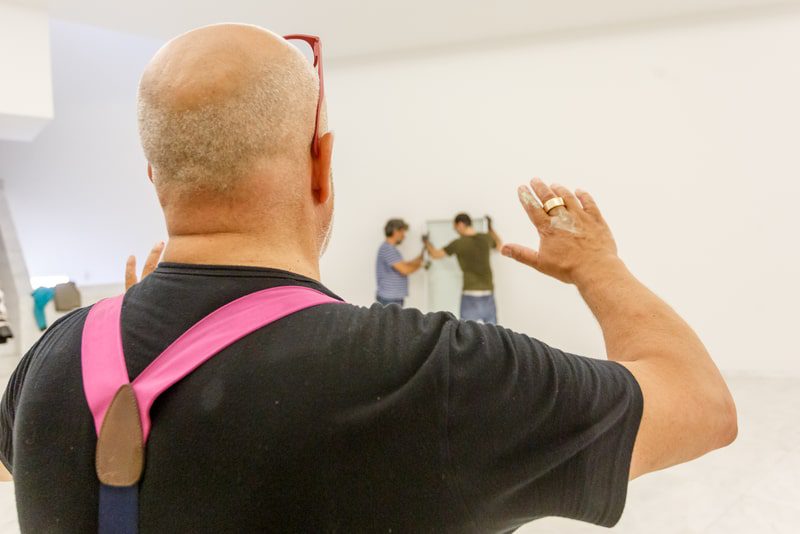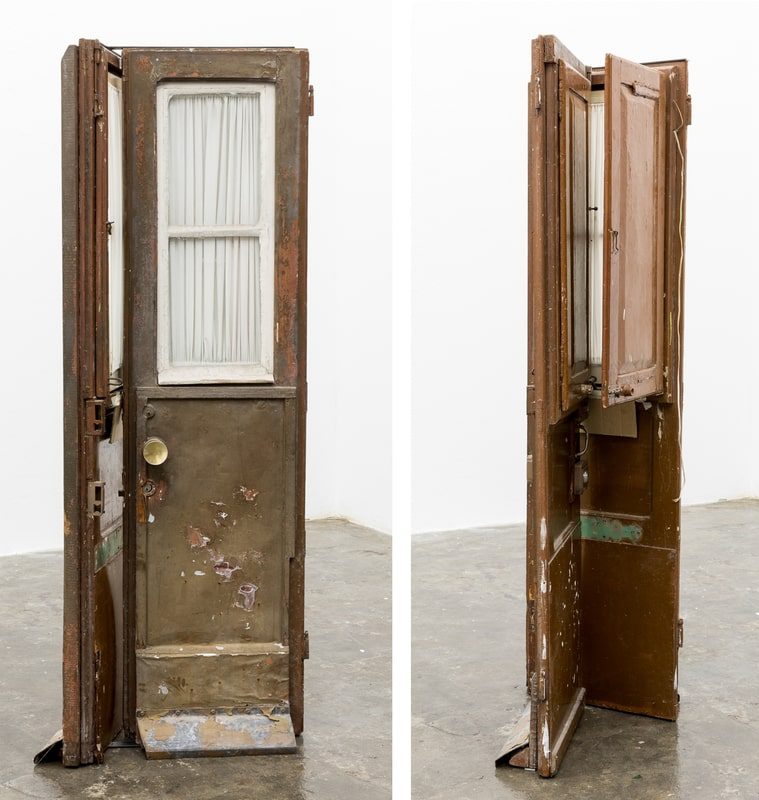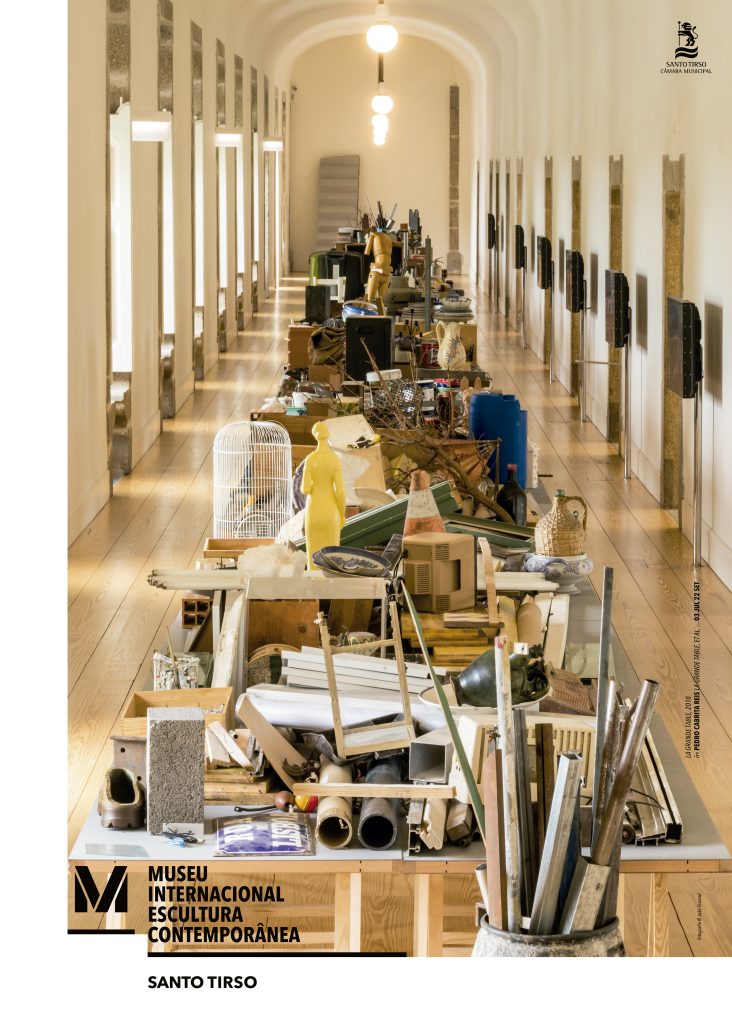Pedro Cabrita Reis
03/Jul/2018
a 22/Sep/2018
Pedro Cabrita Reis was born in Lisbon in 1956, where he lives and works. With consolidated international recognition, his work has become crucial to the understanding of sculpture since the mid-1980s. His complex body of work, marked by an idiosyncratic philosophical and poetic discourse, spans a wide range of media: painting, sculpture, photography, drawing, and installations made from found materials and manufactured objects. Using simple materials and subjecting them to constructive processes, Pedro Cabrita Reis recycles almost anonymous traces of primordial gestures and actions repeated in everyday life. Centered on questions of space and memory, his works acquire a suggestive associative power that, going beyond the visual, reaches a metaphorical dimension.
The complex theoretical and formal diversity of Pedro Cabrita Reis’s work stems from an anthropological reflection that stands in opposition to the reductionism of sociological discourse. In fact, it is upon silences and inquiries that his work is grounded.
His work has been exhibited in shows organized by various museums and art centers, including: “Sometimes one can see the clouds passing by”, Kunsthalle Bern, 2004; “Stillness”, Camden Arts Centre, London, 2004; “True Gardens #3 (Dijon)”, FRAC Bourgogne, Dijon, 2004; “Pedro Cabrita Reis”, M ACRO, Museo d’Arte Contemporanea, Roma, 2006; “La ciudad de adentro”, OPA, Guadalajara, 2007; “True Gardens #6”, Kunsthaus Graz, Graz, 2008; “Pedro Cabrita Reis”, Fondazione Merz, Torino, 2008; “La Línea del Volcán”, Museo Tamayo, Mexico City, 2009; “Deposição”, Pinacoteca de São Paulo, 2010, “One after another, a few silent steps”, Hamburger Kunsthalle, Hamburg, 2009 – Carré D’Art, Nîmes, 2010 – Museum for Contemporary Art, Leuven, 2011 – Museu Colecção Berardo, Lisbon, 2011; “States of Flux – Pedro Cabrita Reis”, Tate Modern, London, 2011-2013; “A Remote Whisper”, 55a Biennale de Venezia, 2013; “Lifted Gaze”, De Vleeshal, Middelburg, 2014; “Alguns nomes”, Galeria Mul.ti.plo, Rio de Janeiro, 2014; “Fourteen paintings, the preacher and a broken line”, The Power Plant, Toronto, 2014; “The London angles”, Sprovieri Gallery, London, 2014; “The Field”, Peter Freeman Inc., New York, 2014; “Herbarium (Madrid)”, Galeria Juana de Aizpuru, Madrid, 2015; “Les lieux fragmentés”, Hotel des Arts, Toulon, 2015; “A few drawings, a façade inside and a possible staircase”, The Arts Club, Chicago 2015; “Pedro Cabrita Reis”, Kewenig Galerie, Berlin 2015; “Pedro Cabrita Reis”, Konkrete Mehr Raum!, Osnabrück 2015; “La casa di Roma – L’Albero della Cuccagna”, MAXXI – Museo Nazionale delle Arti del XXI secolo, Rome 2015; “A casa de Coimbra – anozero’15 – um lance de dados, Bienal de Arte Contemporânea de Coimbra”, Sala da Cidade, Refeitório do Convento de Santa Cruz, Coimbra 2015; “Todo o Património é Poesia”, Fórum Eugénio de Almeida, Évora 2016; “Fallen and Standing”, Kewenig Galerie, Palma de Mallorca 2016; “Show me your wound – TEFAF Maastricht”, Maastricht Exhibition and Congress Centre (MECC) 2016; “Art Unlimited / Basel 2016”, Halls Messe Basel, Hall 2.1, Basel 2016; “DA COLEÇÃO EM LISBOA – O Olhar do Artista: Obras da Coleção de Serralves”, Torreão Nascente da Cordoaria Nacional, Lisboa 2017; “Das pequenas coisas”, Atelier-Museu Júlio Pomar, Lisboa 2017; “Parcours”, Art Basel, Basel’s Münsterplatz, Basel 2017; “Col-Lecció per Amor a L’Art. Ornament = Delicte?”, Bombas Gens Centre d’Art, Valencia 2017
———————
Santo Tirso has, for several years now, housed a significant public sculpture by Pedro Cabrita Reis, created as part of the 6th International Sculpture Symposium of Santo Tirso in 2001, at the invitation of Alberto Carneiro.
This emblematic sculpture refers to a theme that has been consistently present throughout his extensive body of work — the “house” — and to how the understanding of this concept can lead us to a deeper insight into the artist’s thinking and practice.
Indeed, in the vast majority of the works—almost all previously unseen—that Cabrita Reis presents in this exhibition, there runs, in many forms, a complex web of ideas and shapes that invite the viewer to a process of discovery, or even a reading shaped by constant intersections and contaminations of materials and objects that are instantly recognizable to anyone. Having been discarded by their former owners due to an apparent loss of immediate usefulness, these objects are carefully, obsessively, and deliberately gathered by the artist in his studio. Guided by time and intention, he grants them a new life—now imbued with historical, philosophical, political, and also poetic meaning.
Pedro Cabrita Reis also conceived a large-scale piece for the long corridor of the Abade Pedrosa Municipal Museum, in which he proposes a very particular reading/discovery/experience of the studio where he has worked since 2006, in Lisbon, near the Tagus River.
The exhibition will be open to the public from July 3rd, and a catalogue featuring texts by Álvaro Moreira and Miguel von Haffe Peréz will be published at the end of the exhibition.
Opening: July 03, 2018 at 7:30 PM
Activities and Workshops
Educational and recreational activities
Guided tours of the sculpture park / Thematic guided visits: Art, Archaeology, and Architecture
Workshops
Free
School Sculpture Workshop – Educational Services of MIEC. “Arte inesperada”
25 to 30 participants | July 4 to September 22, 2018
School Archaeology Workshop – Educational Services of MMAP. “Ser Guerreiro”
25 to 30 participants | July 4 to September 22, 2018
School Archaeology Workshop – CIMP Educational Services. “Articulated Skeleton”
15 to 20 participants | July 4 to September 22, 2018
School Archaeology Workshop – CIMP Educational Services. “Excavate, Clean, and Record”
20 participants | July 1 to August 31, 2018
Family Archaeology Workshop – MMAP Educational Services. “Piece by Piece”
Target audience: Families | 15 to 20 participants | September 8, 2018
Images
